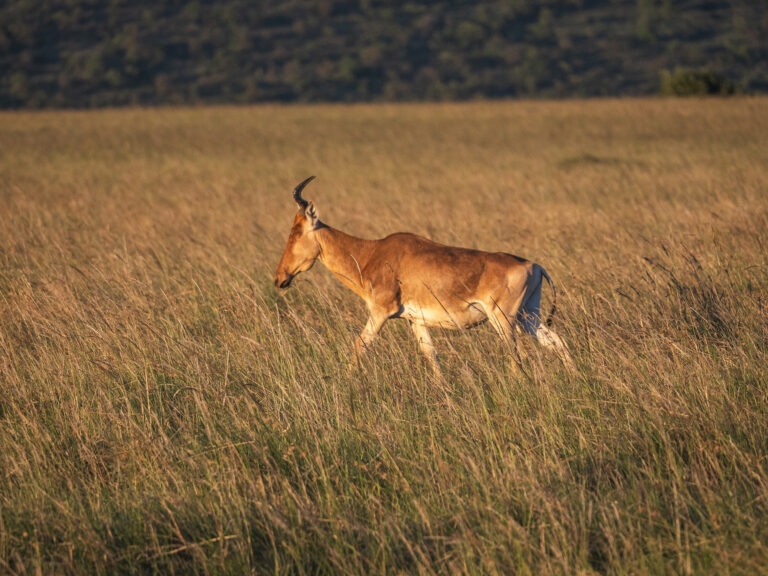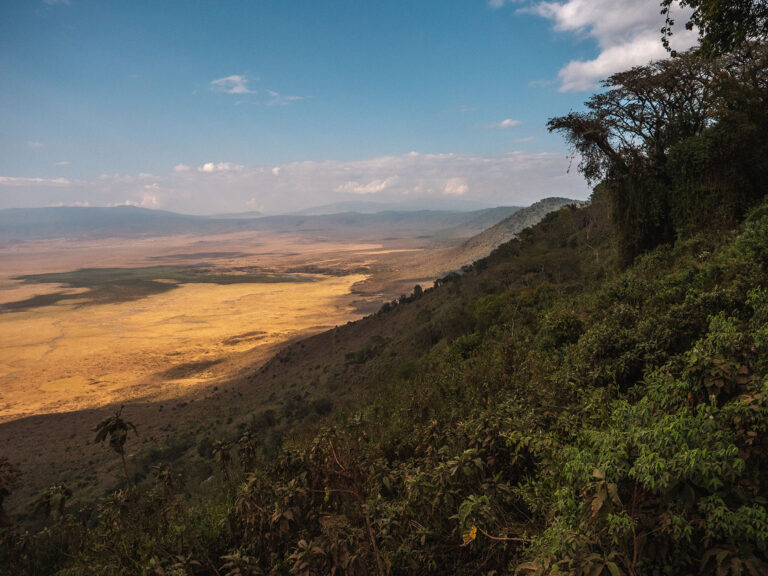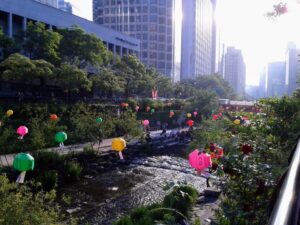Tanzania is one of the best destinations on the planet to embark on a safari. Home to the extensive Serengeti National Park as well as the magical Ngorongoro Crater, the landscapes in Tanzania are both breathtakingly beautiful to admire and also house an extremely high density of wildlife.
Planning your first African safari can be a daunting task. But I’m here to help! In this article I aim to tell you everything you need to know so you can plan the perfect Tanzania safari.

Is Tanzania a Good Destination for Safaris?
While there may be numerous superb safari destinations scattered across the whole of Africa, Tanzania’s breathtaking landscape, diverse wildlife, vast numbers of its animals and fascinating cultures, easily place it among the top safari destinations in the world.
Iconic national parks such as the Serengeti and Ngorongoro Crater provide visitors with high chances of seeing all of Africa’s big cats in action, as well as the Big Five (lions, leopards, elephants, rhinos and buffalos).
The Serengeti is also home to the world’s largest land migration, which provides all wildlife enthusiasts a reason all on its own to visit Tanzania. Witnessing literally millions of wildebeest, zebras and other game sprinting through the Serengeti savannahs and crossing crocodile-infested rivers, is not something that you can see anywhere else in the world.
Then there is the majestic Mount Kilimanjaro and Mount Meru, the tallest peaks in the country which provide breathtaking backdrops and, if you’re feeling adventurous, thrilling hiking experiences.
Throw in the fascinating Maasai and Hadzabe tribes and the tropical beaches of Zanzibar to relax in between safaris, and you’ll realise how difficult it is for other countries to compete with Tanzania.
But don’t just take my word for it – come and see for yourself.

When is the Best Time to go to Tanzania?
Tanzania is an all year-round tourist destination, with each season having something different to offer. As its wildlife is one of its main attractions, the best time to visit would be during the long dry season (June-September), when the vegetation is low and the wildlife is easier to spot. During this period, the weather is also at its finest and the Great Migration is in full swing in the northern regions of the Serengeti. The parks however, are at their busiest too.
January and February form part of the ‘short dry season’ which is also the calving season for the millions of herbivores. The sudden abundance of baby animals brings out the big cats and other predators, mainly hyenas and wild dogs, providing much excitement and drama. This period is fantastic for bird watchers too as it coincides with the arrival of many northern hemisphere migratory species.
If you’re planning to hike Mount Kilimanjaro or Mount Meru, this is also a good time as the weather is stable and temperatures are mild, although the mercury can drop to well below zero near the summit. Mount Meru stands at 4566 metres above sea level, while ‘Kili’ is the highest peak on the African continent, peaking at a whopping 5895 metres above sea level.
March to May is the wettest period and although it’s not an ideal time to be trudging around the African bush, it’s the best time to witness some fascinating courting rituals of many birds of Tanzania. Parks are also less busy during this period and far cheaper too.

How to Go on Safari in Tanzania
The preferred and most popular way of going on safari in Tanzania is by going on a guided game drive, either by booking a group tour or an exclusive private tour. Private tours are understandingly far more expensive. Numerous parks in Tanzania offer various other safari options, such as walking, canoeing, or multi-day hiking and camping safaris and even ballooning safaris, which can provide the ultimate thrill.
Some parks which have well-maintained road networks allow guests to go on self-drive safaris, although certain terms and conditions normally apply, which may vary between each park. Usually, a 4×4 vehicle with a high clearance is a definite pre-requisite and may not veer off the main roads.
Considering you have already spent a lot of money getting here, the little extra for a knowledgeable guide or driver may be money well-spent as they will ensure that you can relax along the way and take you where you’re bound to have the best sightings. Personally, I am not a huge fan of self-drive safaris. You can miss so much and if you break down or get a puncture, I don’t know about you, but changing a wheel while constantly looking over my shoulder is not exactly my idea of fun.
Tanzania is a vast country and getting from one end to the other by road can be long time consuming affairs and not too comfortable either. The safest and most popular way to travel between parks is by safari trucks, best booked when you make your reservations. But if time is an issue for you, propeller planes can also be chartered, but they tend to be fairly costly. For the super-rich, there is also the option of hiring a private jet, but as you can quite expect, they are beyond the reach of us normal folk.

What’s the Cost of a Safari in Tanzania?
Costs of a safari in Tanzania vary between the different parks, the time of year, the type of accommodation you prefer and the range of basics and luxuries that they provide. Booking through a Tanzanian safari operator is far cheaper than through an overseas travel agent and even then they are not exactly cheap either. You can expect to pay from about $300 per person per day for an economy-style safari, $400 for a mid-range safari, and from $500 to $1000 for a luxury safari.
For the Bill Gates’ of this world, there are also ‘beyond luxury’ safaris which can cost anything up to $15,000 per day per person.
Mid-range accommodation is perhaps the most preferred choice for many visitors, but even then, style of accommodation and amenities also vary between lodges. This makes thorough researching and planning vital to ensure the safari experience you select meets your personal requirements and expectations.
One thing for sure, no matter how much money you wish to spend on a safari experience in Tanzania, the memories you take back will last you a lifetime.

How Long Do You Need for a Tanzania Safari?
In a nutshell, anything from three days is possible but as there is so much to see and do, a minimum of seven days is strongly recommended. Spending a few extra days will allow you to experience what the various parks have to offer in terms of variety of landscapes, wild game, bird life and the different options of safaris and various cultural tours.

What Tanzania Itinerary is Best?
While this may depend entirely on each person’s individual preferences, there are some places and things to do that in my view, are simply must-dos for anyone planning a safari in Tanzania.
The Serengeti National Park stands head and shoulders above all others, not only in Tanzania but in the whole of Africa too. Situated in the northern region of the county, this 15,000 km² park is home to 4,000 lions, 1,000 leopards, 500 cheetahs, vast numbers of elephants, buffalos, zebras, giraffes, rhinos, hippos, crocs, hyenas, wild dogs, and literally millions of wildebeest and other antelope species. Although no sighting of every species can ever be guaranteed, nobody that I know has left the Serengeti disappointed. And if you visit during the annual migration, you’ll witness the most spectacular show in the natural world. Just go there!
Not far from Serengeti, the Ngorongoro Crater is another must-visit park in Tanzania. This volcanic crater which is 19 kms wide and spreads over just 260 km², is home to over 25,000 animals including the Big Five. The steep 610 metre high crater rim surrounding the park prevents any migration taking place, but it’s also the reason for the absence of giraffes on the crater floor. The view from the top of the rim is simply breathtaking. Walking safaris along the crater rim are absolutely incredible, allowing you to become part of the ecosystem.
Lake Magadi, at the bottom of the crater, attracts a vast number of water birds, including massive flocks of pink flamingos, making it a most picturesque sight.
Not wishing to take anything away from the other parks, which are all spectacular in their own unique ways, Tarangire National Park is another must-see jewel amongst all of Tanzania’s safari destinations.
Situated about 100 kms southeast of Ngorongoro, the landscape of Tarangire National Park differs from other parks, having a somewhat drier climate. This has resulted in an abundance of the bizarre shaped baobab trees, which are absent in other parks. About 200 km from Ngorongoro Conservation Area, other great option to visit is Arusha National Park.
Tarangire has almost all the animals as the other above-mentioned parks, including all the big cats, and some of the biggest elephant populations in Africa, with some herds being over 300 strong. Birders will also be in their element here as Tarangire is home to over 500 species of birds.
It may not be as spectacular as the Serengeti, but a slightly scaled-down migration also takes place here, drawing serious wildlife enthusiasts, photographers and documentary film makers from around the world.
If you have time to spare or need a relaxing break from safaris, the Zanzibar Islands offer the perfect escape to laze on their white sandy beaches surrounded by the crystal and warm waters of the Indian Ocean. Everything from outrageously luxurious hotels and resorts to rustic cabins on secluded coves along the water’s edge can be found on the Zanzibar archipelago.

Is it Safe to go on Safari in Tanzania?
Although all safaris where wild animals abound will always pose some risk, the level of professionalism of the safari tour operators ensure a perfectly safe experience in Tanzania.
Having said that, selecting reputable tour operators with solid track records will provide travellers an extra layer of safety and peace of mind whilst on safari.
It is also important for people to abide by their instructions and practise some basic common sense at all times whilst both on safari and even at your lodges. Some camps or lodges situated inside the parks are not fenced and animals may wander around at any time, and particularly after dark.

Do You Need a Visa to Visit Tanzania?
While visitors from many countries (mainly African, Caribbean and Hong Kong) do not require visas to visit Tanzania, visitors from most European countries, the UK and the USA do. Foreigners need to check whether they need a visa. A single-entry visa costs $50 and takes about 10 days to get approved. A multiple-entry visa is required if you are a US citizen and costs $100. You can apply for a visa online and pay for it by card.
What to Pack for a Tanzania Safari
Always avoid bright and dark colours when on safari, especially on walking safaris. Bright clothing may startle wildlife and dark colours attract the biting tsetse fly. Also be aware that military camouflage style clothing is prohibited. The best colours are muted greens, beiges, browns and greys.
Loose comfortable clothing that can be worn in layers is recommended, as the early mornings and evenings can get a little chilly, particularly in the highlands. A warm jacket or fleece that can be removed later as the day warms up, will be most useful during those periods.
Long sleeve lightweight shirts and long pants are also recommended for protection against the sun, the mozzies and tsetse flies. A hat and sunglasses are must-haves too. If you’re planning to visit during the rainy season, a lightweight rain jacket will certainly come into use.
Comfortable good quality sneakers are perfect for game drives and limited walking excursions, but if you’re planning on going on walking safaris or any hiking activity, a good pair of waterproof hiking shoes with sufficient ankle protection is a necessity.
Guides usually have binoculars for sharing between the guests, but you could also bring your own. Make sure you also have a spare memory card and batteries for your camera because you may not be able to stop clicking!
Do You Need Any Vaccinations to Visit Tanzania?
Although some vaccines are recommended to protect you from catching a tropical disease, you are only required to produce a yellow fever certificate if you’re arriving from or have recently visited a country where yellow fever is prevalent, such as Kenya. If you’re arriving directly from anywhere else, no vaccination certificate is required.
Conclusion
As you have probably fathomed out by now, Tanzania is the ultimate safari destination, amongst all countries in the whole of Africa. Although safaris do come at a price, by planning thoroughly and selecting the right park, the right season, lodge, accommodation and tour operator, you can experience the perfect Tanzania safari that suits your needs and budget.
Author: Ella McKendrick








2 Responses
Loved every moment of our Tanzania safari travel, especially seeing the Big Five.
Yes! Tanzania is not only about the Kilimanjaro! There are amazing Safari opportunities as well! 🙂